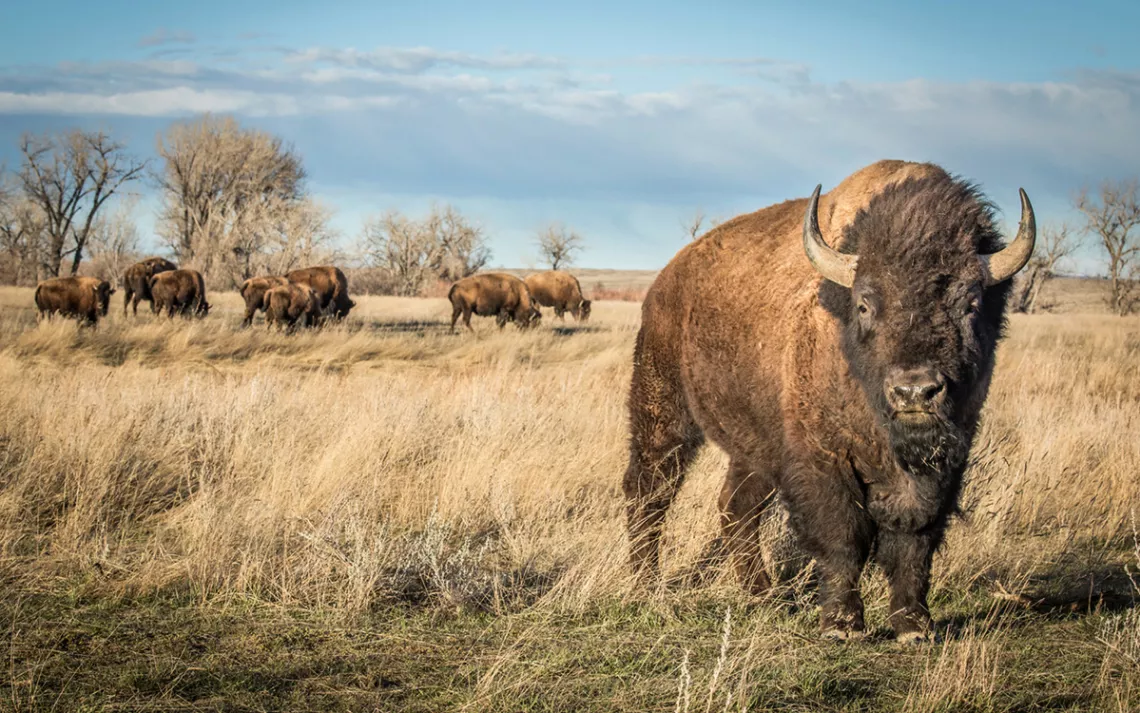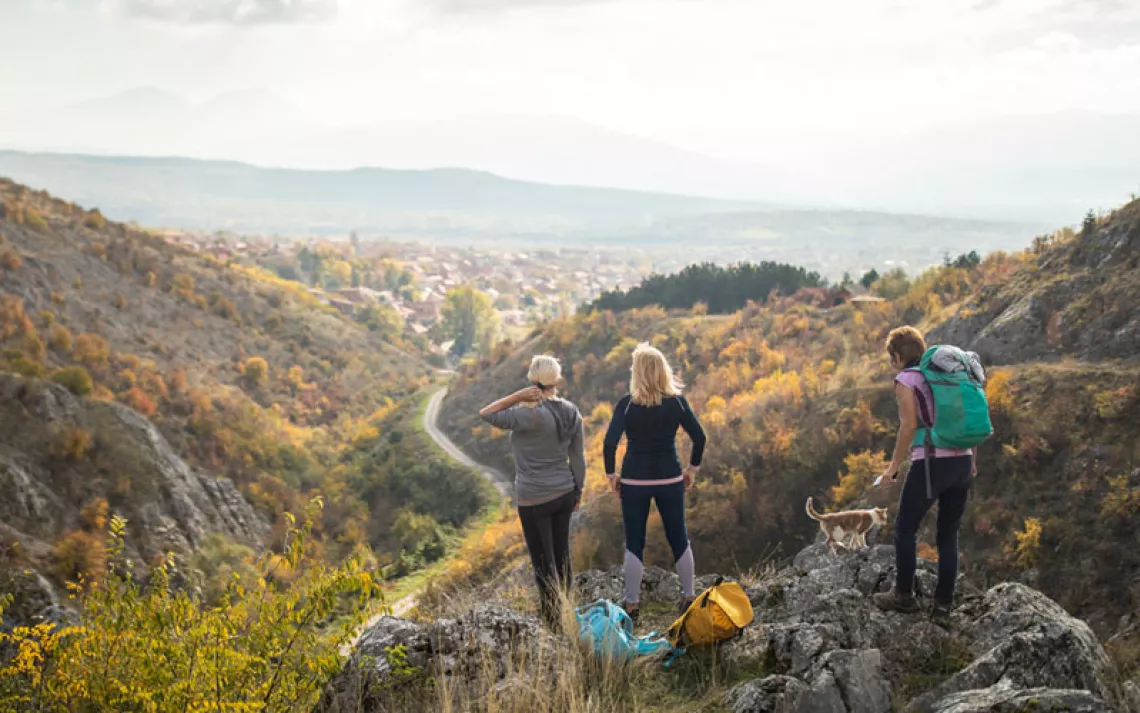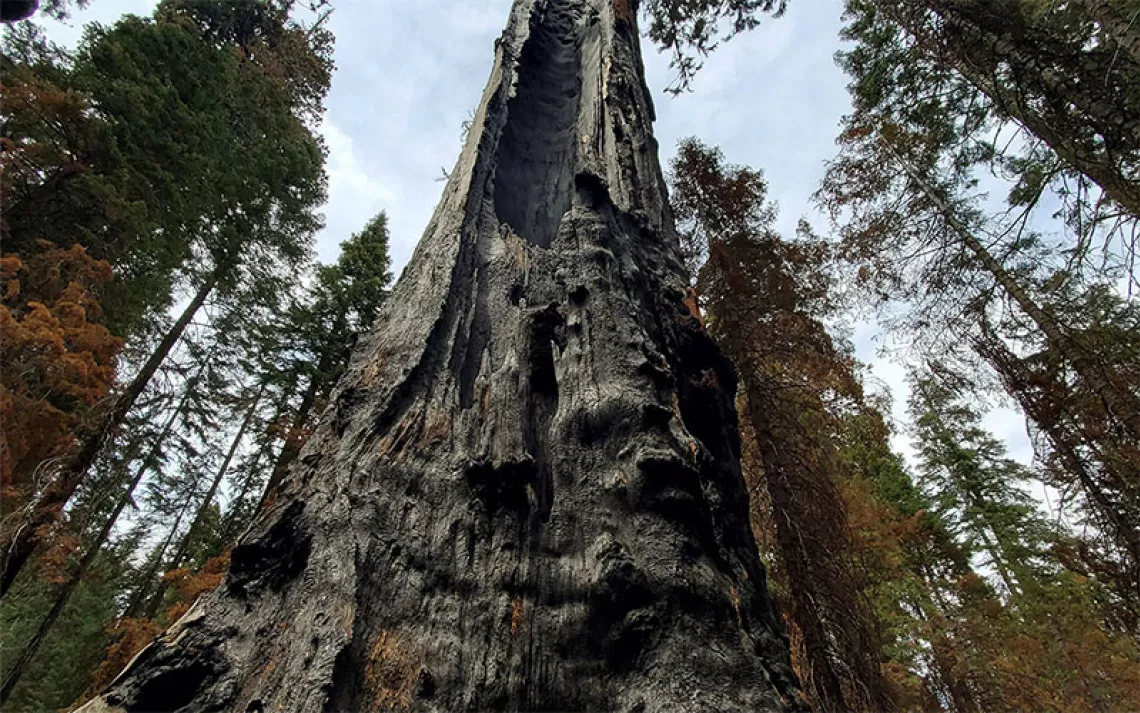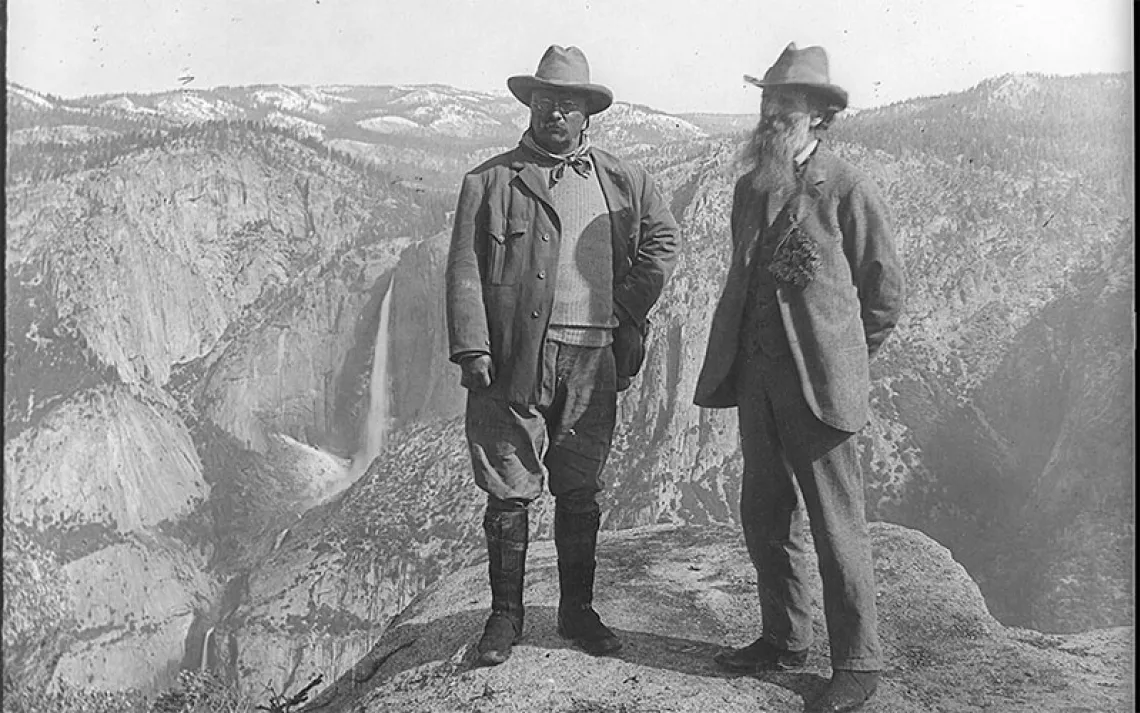You Can Visit America's Serengeti by Bike
Watch out for bison, plus other tips for visiting the American Prairie Reserve

Photos by Aaron Teasdale
My bicycle rolls along a lonely dirt track in the nearly treeless ranchlands of eastern Montana when a sign appears: “Caution, bison on range.” I rumble over a livestock grate and soon they appear, hulking brown masses of muscle and fur, all shoulder and horn, ruminating in a flaxen field. A massive, one-eyed bull with a head the size of a black bear watches from tall, roadside grass; it occurs to me that here is an animal that could follow its battering-ram forehead and casually plow me back into the earth, if it so desired. Thankfully, it does not so desire.
I’m here in Montana on the far edge of the Great Plains in the American Prairie Reserve (see "Building an American Serengeti in Montana")—a wildly ambitious attempt to buy up large ranches in the area, which can span 25,000 acres or more, and return them to wildlife habitat. Besides bringing bison back to these oceanic grasslands, APR is removing fences and restoring habitat on a mass scale, preparing for the seemingly inevitable return of wolves and grizzly bears, both of which are expanding their populations east from the protected wilds of the Rocky Mountains.
In the not-so-distant past, 10 to 30 million bison roamed here and provided a foundation for many Native American cultures. In the old days, says George Horse Capture Jr., a leader of the Gros Ventre, or Aaniiih, tribe on the nearby Fort Belknap Reservation who sits on the reserve’s national council, “You could hear ‘em days before you’d see 'em," he says. “The ground would shake.”
“To go see the buffalo out there is remarkable,” he says about the reserve. “Very seldom do you get to watch prayers come true.”
I roll up to a century-old log schoolhouse, one of many once alive with children from the region’s ranches and farms. The youth of today are brown and furry and led by mother bison in a small herd that mills around the cabin. They flee at my approach, dust rising in the air and hooves clomping the earth—too few, still, for the ground to shudder.
Not far away, a colony of black-tailed prairie dogs takes root amid native grasses with help from reserve biologists, who have inserted corrugated plastic tubes into the ground to mimic burrows and jump-start recolonization. Prairie dogs and bison have a symbiotic relationship, and many other species benefit from their habitat-shaping impact—from the bison wallows that hold quenching pools long after rains to the grazed, mixed-height prairie grasses that provide habitat for countless birds.
A long-billed curlew takes wing as I roll through a blue-domed world of golden grasslands. I come to Fourchette Creek, where ancient people once carved petroglyphs. Above rises a 200-foot cutbank once littered with bison bones—a buffalo jump, where Native Americans chased panicked beasts over the precipice, their death begetting life in an age-old drama. I sit in silence, on the bank’s edge, for a long time. Across the sweep of sky, clouds blow in and stretch like taffy, rain sheeting in the distance. Soon the blue has become a gray quilt misting the air. As I ponder the teeming stillness, my awareness builds of the increasingly sonorous layers of bird song emanating from below: meadowlarks in the grass, ducks in cattail-lined oxbows, a killdeer’s wail, a woodpecker’s staccato percussion.
The symphony has a nourishing quality. I’m reminded of something Horse Capture—who also heads the Fort Belknap Reservation’s tourism branch, Aaniiih Nakoda Tours—said about spending time here: “All the different holy gifts that we was given, they’re there to help repair us from the day-to-day life that we live now.”
Perhaps, like you, I love wild places for their unique alchemy of serenity and electric possibility, which hums just beneath. The longer I sit on the edge of this buffalo jump above the prairie, the more I realize the things that are missing. It’s beautiful, yes, but it’s a world without fangs. I imagine the landscape before white men arrived—coursing with wolves, grizzlies, and bison too many to count.
I pedal on and see coiled piles of barbed-wire fencing that has been removed. Heading west now, I chase the sinking sun. Long shadows reveal what first appeared flat to be deceptively complex, the land’s subtle swells and gentle vales filigreed by water over eons. Several pronghorn graze in the distance. A line of white-tailed deer ambles along a green hillside.
It’s spring, and geese clatter and honk across the sky. Pocket wetlands shimmer blue, with boisterous frogs and red-winged blackbirds watching over prairie pools speckled with pintails, widgeons, and scaups. The road fades to a grassy track, and a chorus of meadowlarks rings in such profusion I’m convinced the road is lined with them like the crowd at a parade.
Coyote scat appears on the ground, one small heap after another, some glistening and black with fresh protein. Here is an assemblage of bones, which I guess to be bison based on the hulking diameter of the femurs. A maniacal sound cuts the air—coyotes, their wails ringing across the prairie.
I follow a faintly defined track up a gentle rise. The sun slips behind distant mountains to the west, the sky ablaze. In the direction of the crying coyote, a grassy rib of land rises like an enormous whale breaching from the prairie sea. I lay my bike in the grass and look through binoculars at the whale’s back. There, silhouetted against a molten sky, is the black form of the wild canid, tilting its head back to the night.
It seems to look at me, another silhouette, its ululations serenading the twilight. More bones appear, white and curving—a ribcage from another bison skeleton, this one more coherent, fleshy discs interlocked with vertebrae and bones holding threads of flesh like memories. The ribs curve into the air like a many-fingered hand rising from the soil, reaching for something beyond its grasp, or perhaps bidding farewell to the prairie, the blood orange sky, the coyotes.
I spend some time with the bones, listening to the coyote, watching the color drain from the sky, cooling air on my skin. “We all need magic in our life,” Horse Capture had told me. I’d nodded along, but it took this bike ride for me to truly understand.
By the light of the moon, I pedal back toward camp. Two white pelicans, pearly in the lunar light, fly alongside my shoulder, accompanying me across the prairie. I realize then that the wildness has always been here. It was just waiting for us to welcome it back until the earth shakes once again.
Visiting American Prairie Reserve
The reserve encourages visitors to explore the landscape, currently spread across nine distinct units, each with its own personality. Free maps can be requested on americanprairie.org.
Getting there and where to stay
No matter which region of the reserve you visit, it will be remote. Great Falls, a four-hour drive from the western portion of the reserve, has the nearest major airport. Lewistown, three hours to the south, and Malta, an hour north, are the gateway towns. Both feature basic lodging and dining options in real-deal Western settings. The reserve currently features two designated campgrounds. The new Antelope Creek Campground features tent and RV sites and four cabins a few miles from the Missouri River. At Buffalo Camp, in the Sun Prairie Unit in the heart of the reserve, you might camp near free-roaming bison. The nearby Enrico Education & Science Center can host educational or research groups with prior arrangement. Yurts, both high-end and rustic, are available for rent at Kestrel Camp and on the PN unit. A 200-mile, hut-to-hut system spanning the reserve is in the works.
What to do
Most reserve lands are open to human-powered travel of all varieties. Hiking or mountain biking on old ranch and homestead two-track roads are good ways to explore. Wildlife and bird watchers will find plenty to ogle, while the Missouri River is a storied paddling route with a variety of access points. Aaniiih Nakoda Tours and Missouri River Outfitters can help with guiding or car shuttling. The roads here are gravel, the distances vast, and the nearest help distant. Come with a four-wheel-drive vehicle, emergency supplies, quality maps, and water, in whatever quantity you need for the duration of your visit.
When to go
Spring and fall, when temperatures are refreshingly cool, are the best seasons on the reserve. Summers can be hot and shadeless but are a good time to paddle the river. Winter, when the air stings and the region’s remote roadways can be blocked with snow, is best left to stoic locals.
Guides
Aaniiih Nakoda Tours offers cultural and interpretive tours of the reserve and surrounding landscapes. Lewis and Clark Trail Adventures, based in Missoula, supports yurt trips on the reserve and guides hiking and paddling trips in the area.
 The Magazine of The Sierra Club
The Magazine of The Sierra Club







